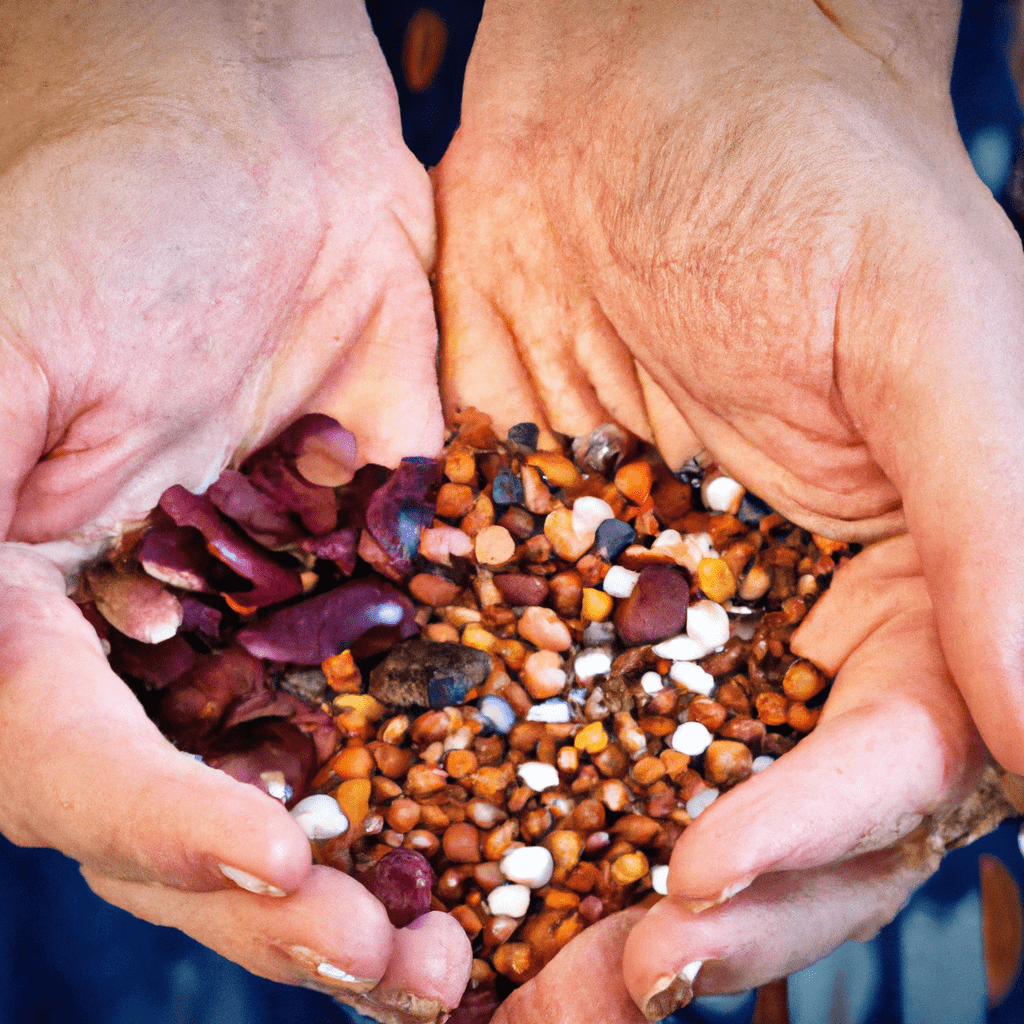
Welcome to our comprehensive guide on heirloom seeds and the fascinating world of preserving rare varieties and flavors. In this article, we will delve into the significance of heirloom seeds, their benefits, and how you can tap into their wisdom to create a diverse and sustainable garden. Join us on this journey as we explore the rich history, unique characteristics, and the importance of preserving these precious seeds.
What are Heirloom Seeds?
Heirloom seeds are seeds that have been passed down through generations, carefully preserved for their distinct qualities and heritage. Unlike hybrid or genetically modified seeds, heirloom seeds are open-pollinated, which means they can be naturally pollinated by wind, insects, or other natural means. These seeds have a rich history and carry the legacy of traditional farming practices.
The Significance of Heirloom Seeds
Heirloom seeds play a vital role in preserving biodiversity and maintaining the genetic diversity of plants. They offer a wide range of flavors, colors, and textures that have been lost in modern commercial varieties. By cultivating heirloom seeds, we contribute to the conservation of rare and unique plant varieties, ensuring their survival for future generations.
Benefits of Heirloom Seeds
- Exceptional Flavors: Heirloom seeds often offer a wide array of flavors that are distinct and superior to commercial varieties. From sweet and juicy tomatoes to aromatic herbs, heirloom plants provide a culinary experience like no other.
- Genetic Diversity: Heirloom seeds maintain the genetic diversity of plants, which is essential for the overall health and resilience of our ecosystems. This diversity helps plants adapt to changing environmental conditions and resist pests and diseases.
- Preserving History: Growing heirloom seeds allows us to connect with our ancestors and the agricultural practices of the past. It is a way of preserving cultural heritage and honoring the traditions that have shaped our food systems.
- Sustainability: Heirloom seeds are well-suited for organic and sustainable gardening practices. They are often more resilient, requiring less synthetic fertilizers and pesticides, making them an environmentally friendly choice.
Choosing and Sourcing Heirloom Seeds
When it comes to choosing and sourcing heirloom seeds, there are a few key factors to consider. Let’s explore the steps you can take to find the perfect heirloom seeds for your garden.
Research and Selection
Begin by researching the specific types of heirloom seeds you are interested in. Consider the climate, soil conditions, and available space in your garden. Look for varieties that are well-suited to your region and meet your desired flavor profiles and culinary needs.
Local Seed Banks and Exchanges
Check if there are any local seed banks or exchanges in your area. These community-based initiatives often offer a wide range of heirloom seeds that have been adapted to local conditions. Engaging with these organizations not only helps you find unique seeds but also supports the preservation of local plant diversity.
Online Seed Companies
There are numerous online seed companies that specialize in heirloom seeds. Take the time to read reviews and choose reputable companies that prioritize seed quality and preservation. Look for companies that provide detailed descriptions, growing tips, and customer support to ensure a successful gardening experience.
Seed Saving and Exchanging
Once you have grown heirloom plants, you can save the seeds for future use. Seed saving is an integral part of preserving heirloom varieties. It allows you to maintain a self-sustaining seed bank and even exchange seeds with other gardeners, contributing to the wider conservation efforts.
Cultivating Heirloom Seeds
Now that you have chosen your heirloom seeds, it’s time to cultivate them and bring their unique flavors and characteristics to life. Here are some essential tips to help you successfully grow and nurture your heirloom plants.
Soil Preparation
Prepare your soil by adding organic matter, such as compost or well-rotted manure. Heirloom plants thrive in nutrient-rich soil, so ensure that it is well-draining and retains moisture adequately. Conduct a soil test to determine if any specific amendments are required.
Planting and Germination
Follow the instructions provided with your heirloom seeds for the optimal planting depth and spacing. Some seeds may benefit from pre-soaking or scarification to aid germination. Consider the specific requirements of each variety and adjust your planting approach accordingly.
Watering and Care
Heirloom plants require consistent watering, especially during dry periods. Be mindful of not overwatering, as this can lead to root rot. Mulching around the plants can help retain moisture and suppress weed growth. Regularly monitor for pests and diseases, adopting organic pest control methods when necessary.
Harvesting and Seed Saving
Once your heirloom plants have matured, it’s time to harvest and save the seeds for future use. Allow the fruits or flowers to fully ripen on the plant before collecting the seeds. Follow proper seed-saving techniques to ensure the seeds remain viable and ready for the next growing season.
Conclusion
Congratulations on embarking on the journey of growing and preserving heirloom seeds! By tapping into the wisdom of these rare varieties, you not only cultivate exceptional flavors but also contribute to the conservation of our plant heritage. Remember to choose your seeds wisely, nurture them with care, and embrace the joy of growing your own diverse and sustainable garden. Let the flavors of heirloom seeds transport you to a world where tradition and innovation coexist, providing us with a connection to our past and hope for the future.